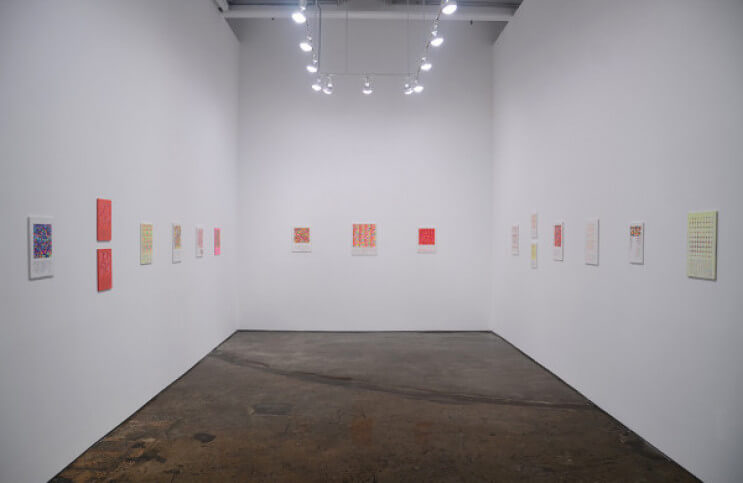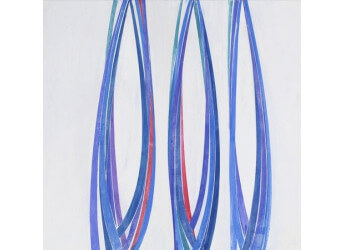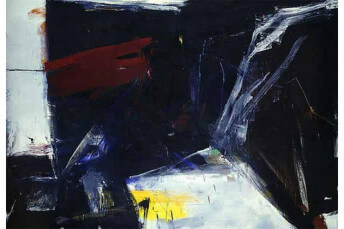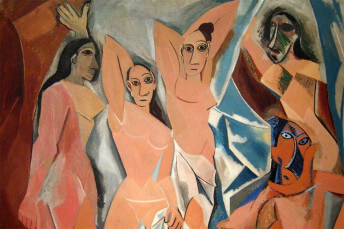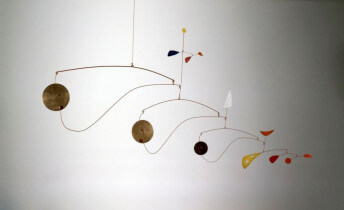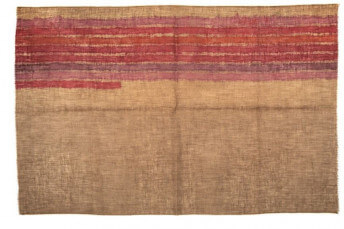The Week in Abstract Art – A Culture of Forms
Oct 12, 2016
Every culture has its own language. That language includes verbal and written communication systems, but it does not stop there. The language of a culture includes every phenomenon that identifies members of the culture to each other and to the shared essentials that collaborate to embody their common spirit. A human being can belong to many cultures. We read our cultural languages in the faces, clothes, smells and sounds of others, as well as in our movements, our relics, our architecture, our politics and our art. The abstract artist Parviz Tanavoli is an example of someone who belongs to many cultures. The most famous Iranian contemporary artist, Tanavoli specializes in creating nothing. He calls the nothings he creates heeches. Heech is a Farsi word meaning nothingness or emptiness. The heeches Tanavoli makes take the form of calligraphic abstractions of the word. He has made heeches out of neon, metal, wood and plastic, and in all different sizes. He recently unveiled his biggest heech sculpture in Toronto, at the Aga Khan Museum. The cultures to which Tanavoli belongs include the art culture, the Iranian culture and the Canadian culture. And he is also a member of the biggest human culture: the culture of forms. This culture consists of all who respond to form as a language of its own. The abstract qualities of form communicate the fundamental elements of existence, such as volume, mass and space. Form is everything. Without form, we would have nothing. But as we see from the work of Parviz Tanavoli, nothing can be something. This week we celebrate the biggest human culture by highlighting five current abstract art exhibitions that explore the language of the culture of forms.
Leslie Roberts: FYEO, at MINUS SPACE, Brooklyn, NY
On view through 29 October 2016
This exhibition examines what Leslie Roberts calls her “illuminated manuscripts of the everyday.” These immeasurably complex compositions of abstract forms recall the flood of sensory input, or what Roberts refers to as “collections of ambient language,” that humans take in while immersed in the contemporary information culture.
Willys de Castro: From paintings to objects 1950-1965, at Cecilia Brunson Projects, London
On view through 9 December 2016
A member of the Brazilian Neo-Concrete Movement, Willys de Castro created a diverse and idiosyncratic language of forms that fluctuated between two and three-dimensional space. This exhibition traces his evolution in the 1950s and 60s as he transformed the rigid language of geometric abstraction into a living language of minimal abstract form.
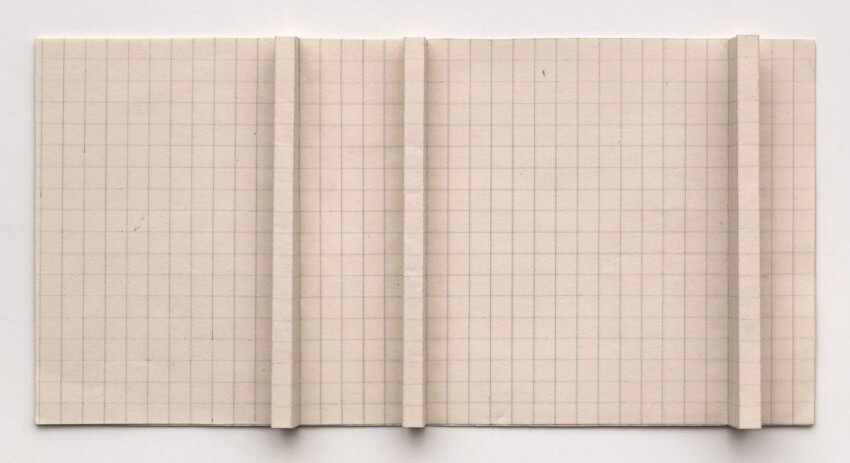 Willys de Castro - Untitled, graph paper cut and folded, 9x18cm, 1950s
Willys de Castro - Untitled, graph paper cut and folded, 9x18cm, 1950s
Rodolfo Arico: Line of Demarcation, at Luxembourg & Dayan, London
On view through 17 December 2016
This is the first major UK solo exhibition of the Italian artist Rodolfo Arico, a trained architect who focused much of his career on the creation of shaped object paintings. These works speak to a language of forms that define space and color and challenge demarcations between traditional aesthetic boundaries, such as sculpture and painting.
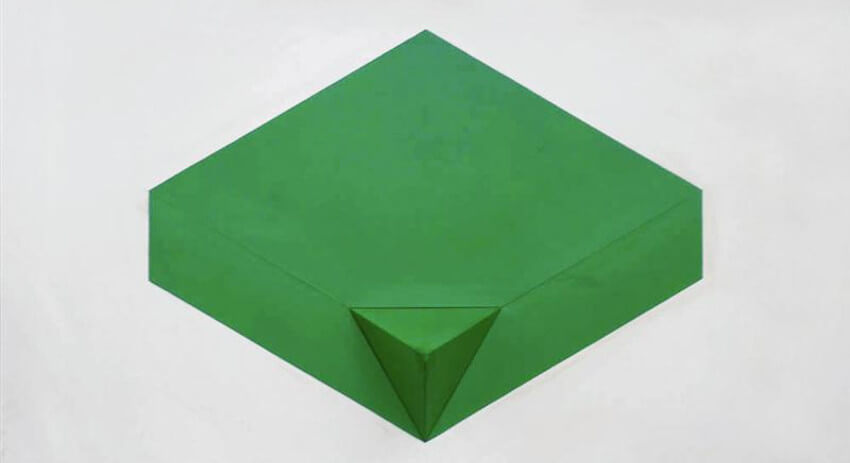 Rodolfo Arico - Scatola, angolo verde, 1968
Rodolfo Arico - Scatola, angolo verde, 1968
DON VOISINE: X/V, at the Center for Maine Contemporary Art, Rockland, ME
On view through 28 October 2016
This Maine-born artist now works in Brooklyn, where he creates foreboding abstract works based on an architectural language of forms. His hard edge compositions feel at once dominant and subdued, like the built environment of an urban landscape devoid of organic activity.
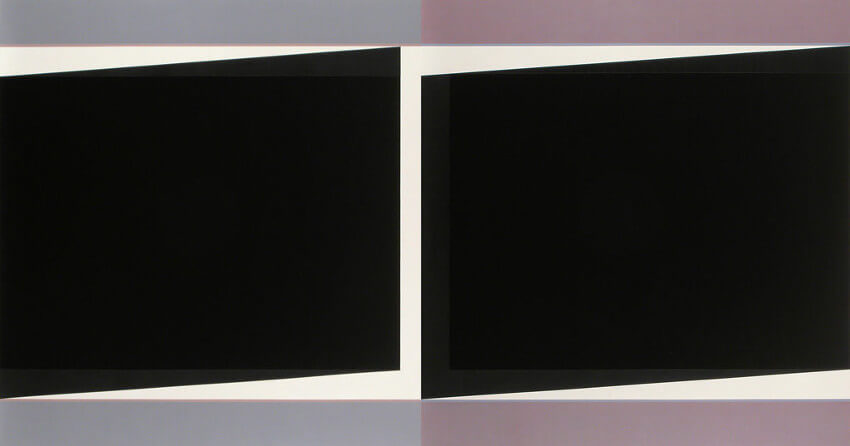 Don Voisine - Double Elvis
Don Voisine - Double Elvis
Spotlight On: Li Yuan-Chia, Richard Saltoun Gallery, London
On view through 25 November 2016
Born in Guangxi Province, Li Yuan-Chia was raised in orphanages in China. After making it to Taiwan, he began his career as an artist. But since abstract and conceptual art broke with Chinese and Taiwanese tradition, he soon left his home yet again to pursue his aesthetic vision. In Europe, he created a complex and passionate language of forms based on a mixture of abstraction and Chinese calligraphy. That work is the subject of this solo exhibition.
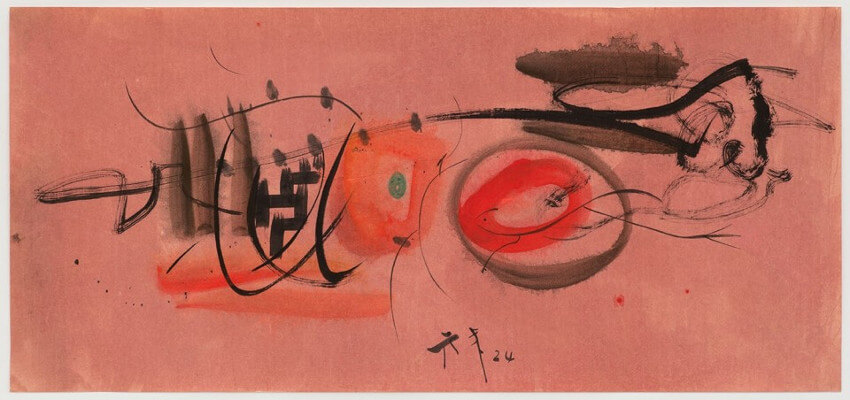 Li Yuan-Chia - Untitled, 1958, Chinese calligraphy brush ink and watercolour on paper
Li Yuan-Chia - Untitled, 1958, Chinese calligraphy brush ink and watercolour on paper
Parviz Tanavoli, Aga Khan Museum, Toronto
On view through 30 April 2017
Three monumental sculptures by Parviz Tanavoli, including his Big Heech, are currently on view in the Aga Khan sculpture park.
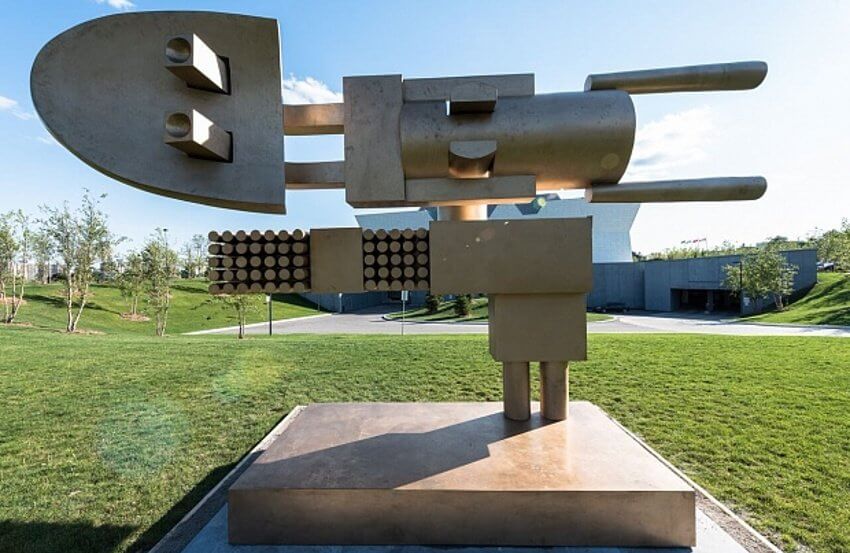 Parviz Tanavoli - Horizontal Lovers, on show at the Aga Khan Museum, 2016
Parviz Tanavoli - Horizontal Lovers, on show at the Aga Khan Museum, 2016
Featured image: Leslie Roberts - Fyeo, Minus Space, Brooklyn, New York, 2016, installation view
By Phillip Barcio
